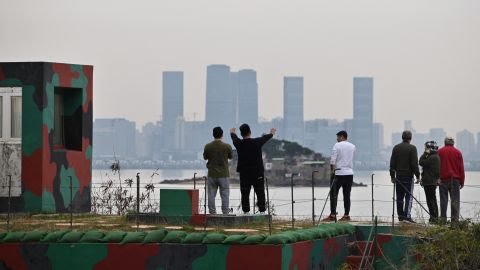Taiwan braces for an ongoing “drip, drip” of Chinese pressure leading up to the May inauguration of its next president, with concerns growing in Taipei over Beijing’s potential to constrict the island’s flexibility without resorting to direct confrontation.
Since Vice President Lai Ching-te’s presidential victory in January, China, perceiving Lai as a separatist, has escalated tensions by snatching a diplomatic ally, adjusting air routes in the Taiwan Strait, and initiating regular coast guard patrols near the Taiwan-controlled Kinmen islands adjacent to the Chinese coastline.
With China claiming sovereignty over Taiwan and facing staunch resistance from the island, tensions have escalated, prompting a visiting U.S. Representative to remark on the gradual escalation of pressure.

The strategic patrols around Kinmen represent a subtler approach, termed a “salami-slicing effort,” which incrementally diminishes Taiwan’s maneuverability without directly engaging in military confrontation.
While China justifies its coast guard patrols as necessary for fishermen’s safety, Taiwan sees it as a tactic to restrict its sovereignty.
The situation around Kinmen exemplifies Beijing’s broader strategy of gradually altering the status quo in the Taiwan Strait, ultimately aiming to constrain Taiwan’s options and shift towards a new norm.
As tensions persist, negotiations between Taiwan and China continue regarding the recent incidents around Kinmen, with families of the deceased seeking redress from Taiwan authorities. Despite the escalating pressures, Taiwan remains cautious, preferring to avoid conflict while maintaining its stance against perceived encroachments on its sovereignty.